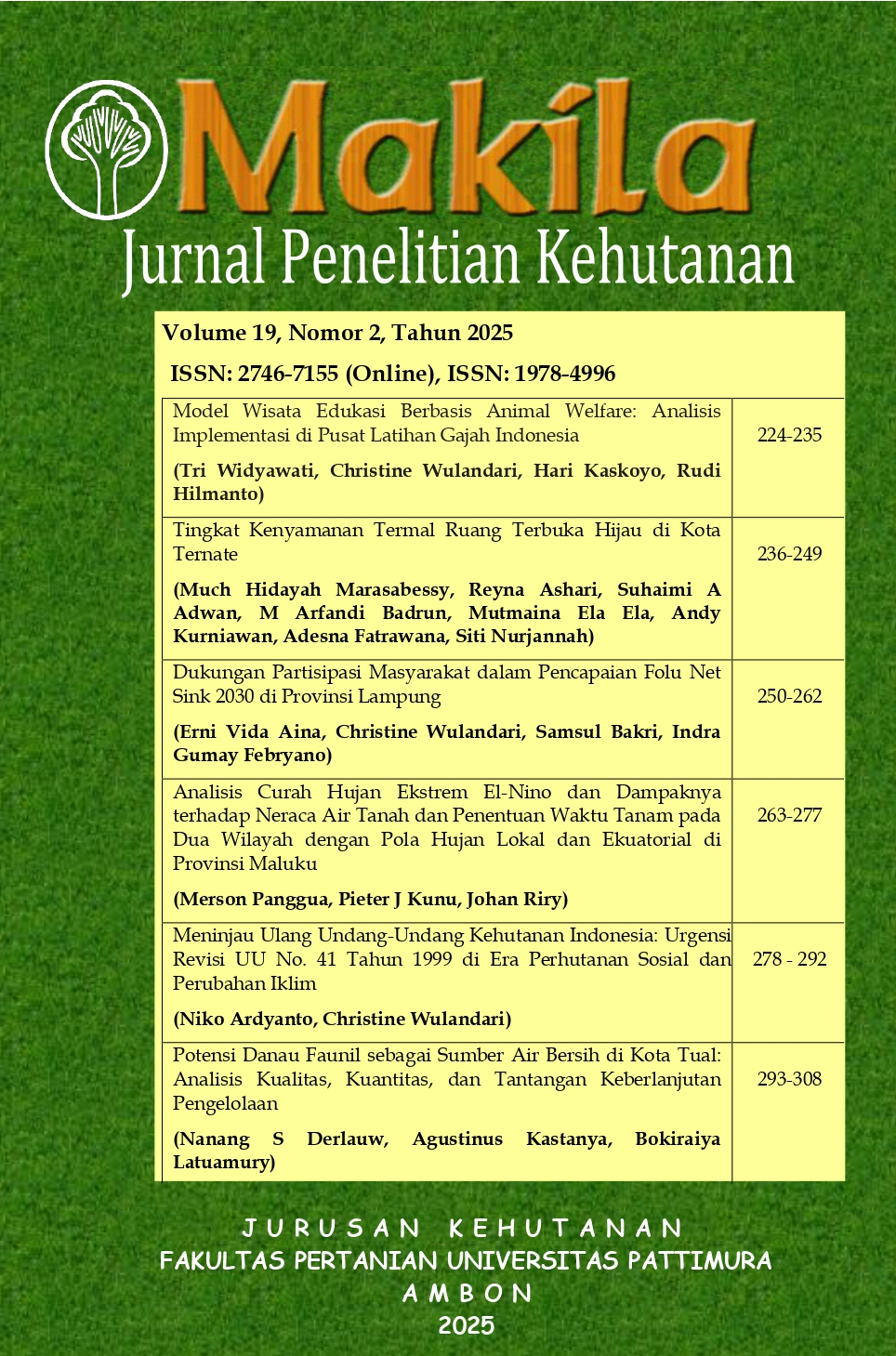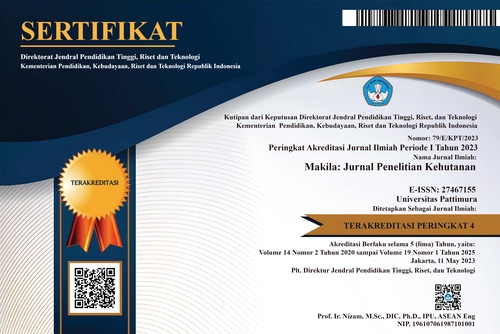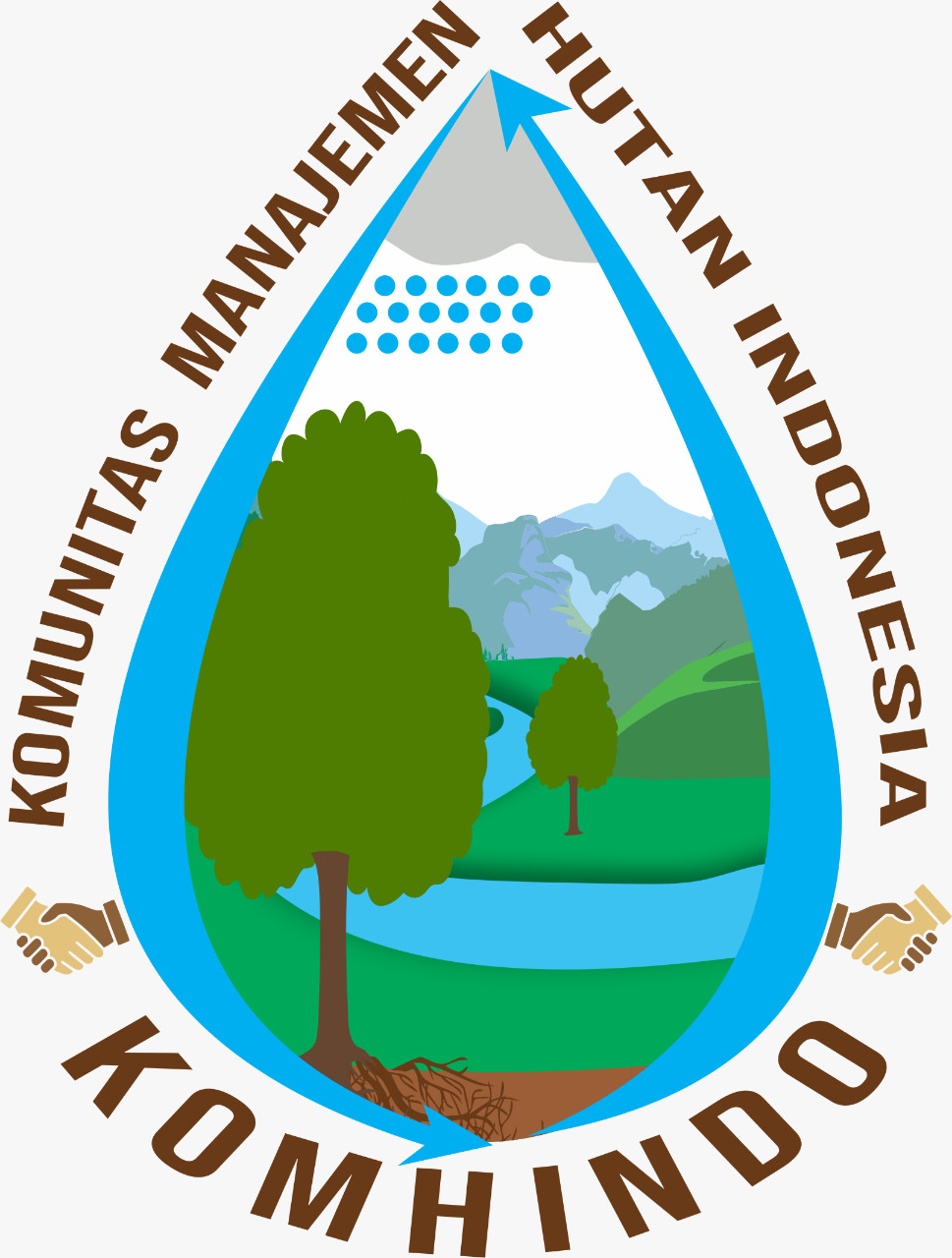Pemetaan Kerentanan Banjir Berbasis Karakteristik Sosio-Hidrologi di DAS Wae Batu Merah, Kota Ambon
Abstract
This study evaluates the flood vulnerability conditions of the Wae Batu Merah Watershed (Ambon City) through a socio-hydrology approach that integrates upland ecological dynamics with downstream exposure, sensitivity, and adaptive capacity. A mixed-methods design combined geospatial analysis and household surveys. Landsat-8 imagery (2013–2023) quantified land-cover change and NDVI trends, while BMKG rainfall records (2012–2023) and BPBD flood archives (2013–2022) captured hydrometeorological variability. Peak discharge measurements (2013–2023) characterized flow response. Social data from 178 households included settlement density, poverty, vulnerable age groups, disability, and institutional participation. All indicators were normalized and integrated using Multi-Criteria Evaluation (MCE) in GIS; vulnerability classes were validated through observed flood-point overlays, distinguishing areal distribution from point aggregation. Results show a ~42% loss of upstream vegetation concurrent with a decline in NDVI from 0.46 (2013) to 0.28 (2023), alongside a ~17% increase in peak discharge, evidenced by a strong negative NDVI–runoff correlation. High-to-very-high vulnerability zones cluster along riparian corridors (Batu Merah–Rijali), whereas >90% of the area falls into medium-to-low classes with fewer flood points. Social vulnerability co-occurs with high density, poverty, limited risk awareness, and weak institutional engagement. The socio-hydrology–MCE framework offers a replicable basis for adaptive risk governance, prioritizing riparian setbacks, vegetation rehabilitation, density management, and capacity-building under increasing climatic pressure.
Downloads
Copyright (c) 2025 Syamsul Fallah Kelihu, Bokiraiya Latuamury, Rina Suryani Oktari

This work is licensed under a Creative Commons Attribution 4.0 International License.











